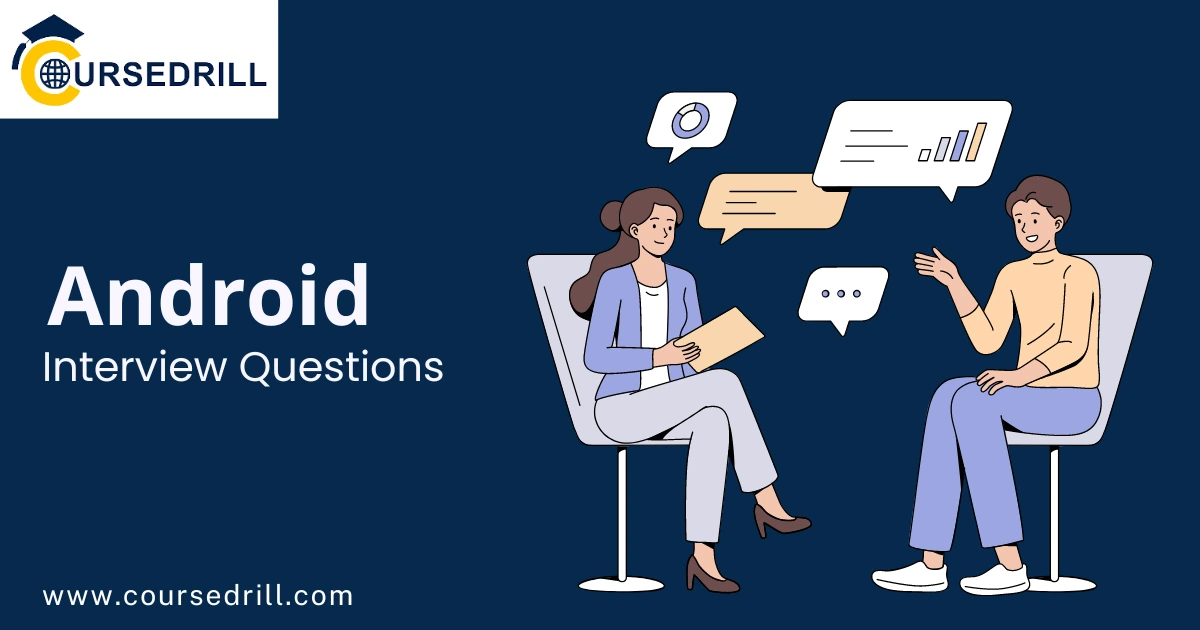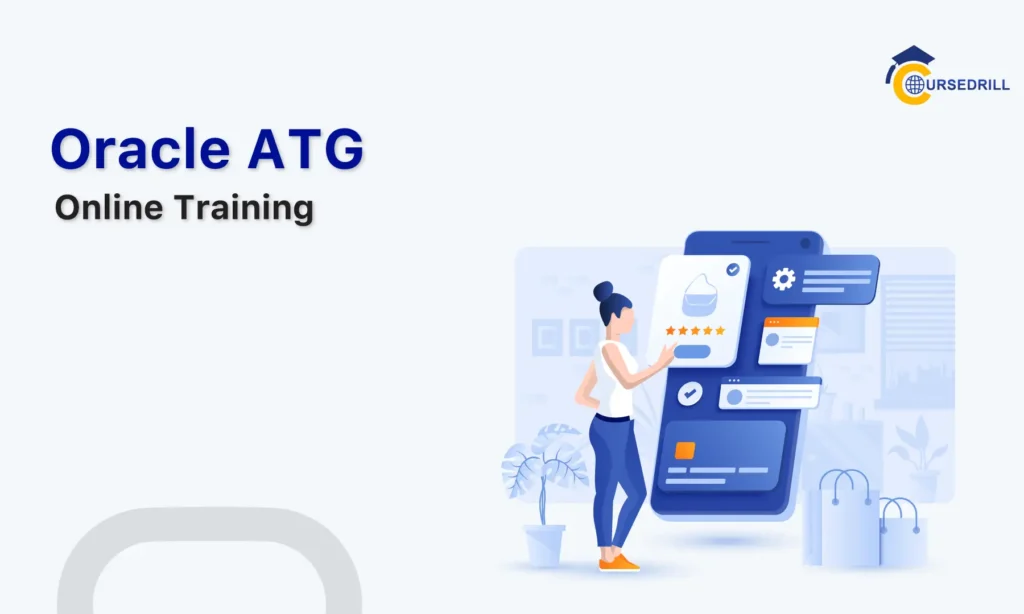- Posted on
- admin
- No Comments
Top 50 Android Interview Questions & Answers
1. What is Android?
Answer: Android is an open-source mobile operating system developed by Google. It’s based on the Linux kernel and is designed primarily for touchscreen mobile devices such as smartphones and tablets.
2. Explain the architecture of Android.
Answer: Android’s architecture comprises several key components:
- Linux Kernel: Provides core system services like memory management, security, and device drivers.
- Android Runtime (ART): Executes Android applications.
- Libraries: Offers a wide range of native libraries (e.g., C/C++) for graphics (OpenGL ES), media, and more.
- Android Framework: Provides high-level services like content providers, view system, and location services.
- Applications: User-facing applications like the phone dialer, browser, and third-party apps.
3. What is an Activity in Android?
Answer: An Activity represents a single screen with a user interface. It’s the fundamental building block of an Android application. Each screen a user sees within an app is typically implemented as an Activity.
4. What is an Intent in Android?
Answer: An Intent is an object that describes an operation to be performed. It can be used to:
- Start an Activity.
- Start a Service.
- Broadcast a message to interested components.
- Deliver data to other applications.
5. Explain different types of Intents.
Answer:
- Explicit Intent: Specifies the exact component (Activity, Service, etc.) to be invoked.
- Implicit Intent: Defines an action to be performed, and the system finds the appropriate component to handle it.
6. What is a Service in Android?
- Answer: A Service runs in the background without a user interface. It’s used for long-running operations, such as playing music, downloading files, or handling network requests.
7. What is a Broadcast Receiver in Android?
Answer: A Broadcast Receiver is a component that responds to system-wide broadcast announcements. It can be used to:
- Receive system events (e.g., battery low, network connectivity changes).
- Receive custom broadcasts from other applications.
8. What is a Content Provider in Android?
Answer: A Content Provider manages a shared set of data. It allows other applications to access and modify the data.
9. What is the difference between a Fragment and an Activity?
Answer:
- Activity: Represents a single screen with a user interface.
- Fragment: Represents a reusable portion of a user interface within an Activity. Fragments can be dynamically added, removed, or replaced within an Activity.
10. What is the purpose of the Android Manifest file?
Answer: The AndroidManifest.xml file provides essential information about the application, including:
- Application components (Activities, Services, Broadcast Receivers, Content Providers).
- Permissions required by the application.
- Hardware and software features used by the application.
11. What is the role of the Dalvik Virtual Machine (DVM) in Android?
Answer: The Dalvik Virtual Machine (DVM) is a custom virtual machine that executes Android applications. It’s designed for efficient execution of multiple virtual machines on a single device. (Note: With the introduction of Android 5.0 (Lollipop), the DVM was replaced by the Android Runtime (ART).)
12. Explain the concept of Layouts in Android.
Answer: Layouts define the structure and appearance of the user interface. Common layout types include:
- LinearLayout
- RelativeLayout
- ConstraintLayout
- FrameLayout
- GridLayout
13. What are Views in Android?
Answer: Views are the basic building blocks of the user interface. Common View types include:
- TextView
- Button
- EditText
- ImageView
- ListView
- RecyclerView
14. What is a View Group in Android?
Answer: A ViewGroup is an invisible container that holds and arranges other Views (or other ViewGroups) within the user interface.
15. How do you handle user input in Android?
Answer:
- OnClickListeners: Attach to buttons and other views to handle clicks.
- TextWatchers: Monitor changes in EditText fields.
- Touch Listeners: Handle touch events on views.
16. What is the difference between a thread and a process?
Answer:
- Process: An instance of an application running on the operating system.
- Thread: A unit of execution within a process. Multiple threads can run concurrently within the same process.
17. Explain the concept of the main thread (UI thread) in Android.
Answer: The main thread (also known as the UI thread) is responsible for handling all user interface interactions. It’s crucial to avoid performing long-running operations on the main thread, as it can cause the application to become unresponsive (ANR).
18. What is AsyncTask?
Answer: AsyncTask is a helper class designed to simplify asynchronous task execution. It allows you to perform long-running operations in the background and publish results on the UI thread.
19. What is a Handler?
Answer: A Handler allows you to send and process messages and runnables associated with a thread’s message queue.
20. What is a Loader?
Answer: A Loader provides a robust and efficient way to load data asynchronously. It simplifies data loading and management within Activities and Fragments.
21. What is the purpose of the Android SDK?
Answer: The Android SDK (Software Development Kit) provides the tools and libraries necessary to develop Android applications.
22. What is the purpose of the Android Debug Bridge (ADB)?
Answer: ADB is a versatile command-line tool that allows you to interact with an Android device or emulator. It can be used for:
- Installing and uninstalling applications.
- Debugging applications.
- Backing up and restoring data.
- Running shell commands on the device.
24. What is the difference between an emulator and a device?
Answer:
- Emulator: A software simulation of an Android device that runs on your computer.
- Device: A physical Android-powered device (e.g., smartphone, tablet).
25. What are some common Android design patterns?
Answer:
- MVC (Model-View-Controller): Separates application logic into three distinct parts.
- MVP (Model-View-Presenter): Improves testability and maintainability by introducing a Presenter layer.
- MVVM (Model-View-ViewModel): Employs data binding to simplify UI updates and improve testability.
26. What is data binding in Android?
Answer: Data binding is a framework that allows you to connect UI components directly to data sources, reducing the amount of boilerplate code.
27. What are some common Android security threats?
Answer:
- Malware: Malicious software that can steal data, damage the device, or compromise user privacy.
- Phishing: Tricking users into revealing sensitive information.
- Man-in-the-middle attacks: Intercepting communication between the device and other systems.
28. How can you protect your Android application from security threats?
Answer:
- Use appropriate permissions.
- Validate user input.
- Encrypt sensitive data.
- Implement secure authentication mechanisms.
- Keep the application and operating system up-to-date.
29. What is a SQLite database?
Answer: SQLite is a lightweight, embedded relational database engine commonly used in Android applications to store data locally.
30. What is a SharedPreference?
Answer: SharedPreferences is a simple mechanism for storing key-value pairs of data. It’s suitable for storing small amounts of data, such as user preferences.
31. What is a RecyclerView?
Answer: RecyclerView is a more flexible and efficient alternative to ListView. It’s designed to efficiently display large datasets.
32. What is an adapter in Android?
Answer: An adapter is responsible for providing data to a View (such as ListView or RecyclerView).
33. What is the lifecycle of an Activity?
Answer: The lifecycle of an Activity includes the following states:
- onCreate()
- onStart()
- onResume()
- onPause()
- onStop()
- onDestroy()
34. What is the difference between onSaveInstanceState() and onRestoreInstanceState()?
Answer:
- onSaveInstanceState(): Called before the Activity is destroyed due to configuration changes (e.g., screen rotation).
- onRestoreInstanceState(): Called after the Activity is recreated due to configuration changes, allowing you to restore the previous state.
35. What is a custom View?
Answer: A custom View allows you to create your own UI components by extending the View class and overriding its drawing methods.
36. What is the difference between a static and a non-static inner class?
Answer:
- Static inner class: Does not have access to the enclosing class’s members.
- Non-static inner class: Has access to all members of the enclosing class, including private members.
37. What is the purpose of the Gradle build system?
Answer: Gradle is the build system used for Android projects. It automates the build process, including compiling code, packaging resources, and signing APKs.
38. What are dependencies in Gradle?
Answer: Dependencies are external libraries or modules that your project relies on. They are declared in the build.gradle file.
39. What is the difference between a release build and a debug build?
Answer:
- Debug build: Contains debugging information and is typically used for development and testing.
- Release build: Optimized for performance and size, and is typically used for distribution to users.
40. What is ProGuard?
Answer: ProGuard is a tool that shrinks, optimizes, and obfuscates your Android application code, making it smaller and harder to reverse engineer.
41. What is an AIDL (Android Interface Definition Language)?
Answer: AIDL is used to define an interface for inter-process communication (IPC). It allows applications to interact with services running in a different process.
42. What is a ViewModel?
Answer: ViewModel is a class that stores and manages UI-related data in a lifecycle-conscious way. It survives configuration changes, ensuring that data remains intact when the Activity or Fragment is recreated.
43. What is LiveData?
Answer: LiveData is an observable data holder class that updates the UI automatically when the underlying data changes.
44. What is Room?
Answer: Room is an object-mapping library that provides an abstraction layer over SQLite. It simplifies database access and helps prevent common errors.
45. What is Kotlin?
Answer: Kotlin is a modern, statically typed programming language that is officially supported for Android development. It offers features like null safety and concise syntax.
46. What are coroutines in Kotlin?
Answer: Coroutines are a powerful concurrency mechanism that allows you to write asynchronous code in a more concise and readable way.
47. What is Jetpack Compose?
Answer: Jetpack Compose is a modern toolkit for building native Android UIs declaratively. It simplifies UI development and improves performance.
48. What is the difference between a stable and an unstable release of Android?
Answer:
- Stable release: A fully tested and released version of Android that is considered production-ready.
- Unstable release: A preview or beta version of Android that may contain bugs or incomplete features.
49. How do you test Android applications?
Answer:
- Unit tests: Test individual components in isolation.
- Integration tests: Test the interaction between different components.
- UI tests: Test the user interface and user interactions.
50. How do you stay updated with the latest Android development trends?
Answer:
- Follow official Android developer blogs and documentation.
- Attend conferences and meetups.
- Participate in online communities and forums.
- Experiment with new technologies and tools.
Popular Courses



